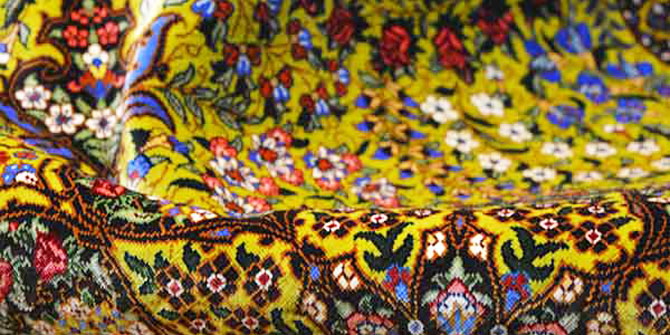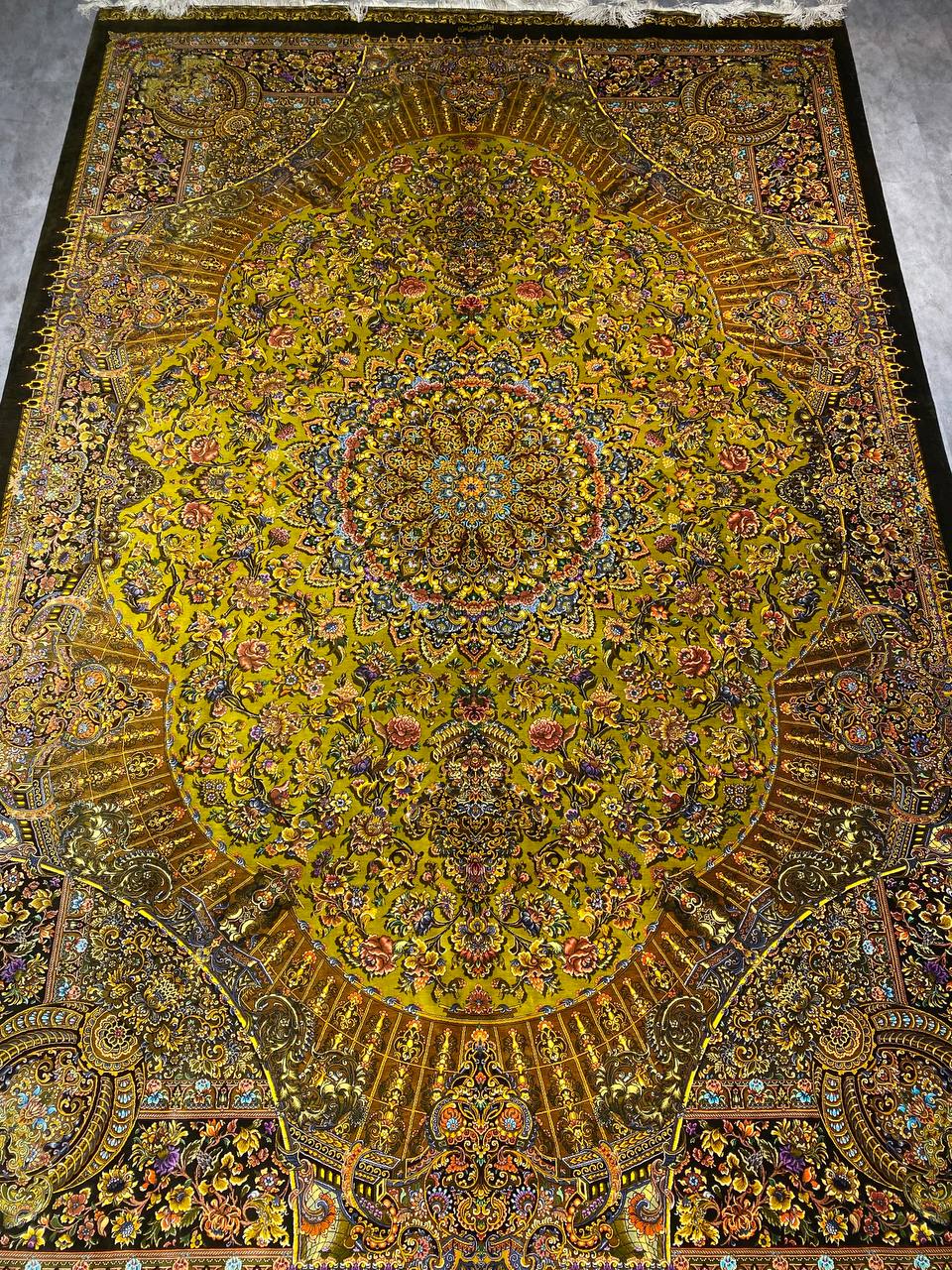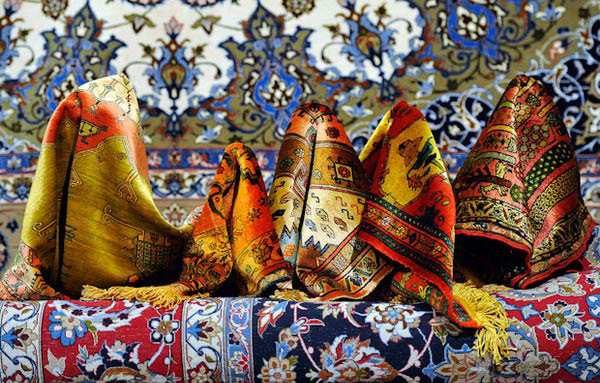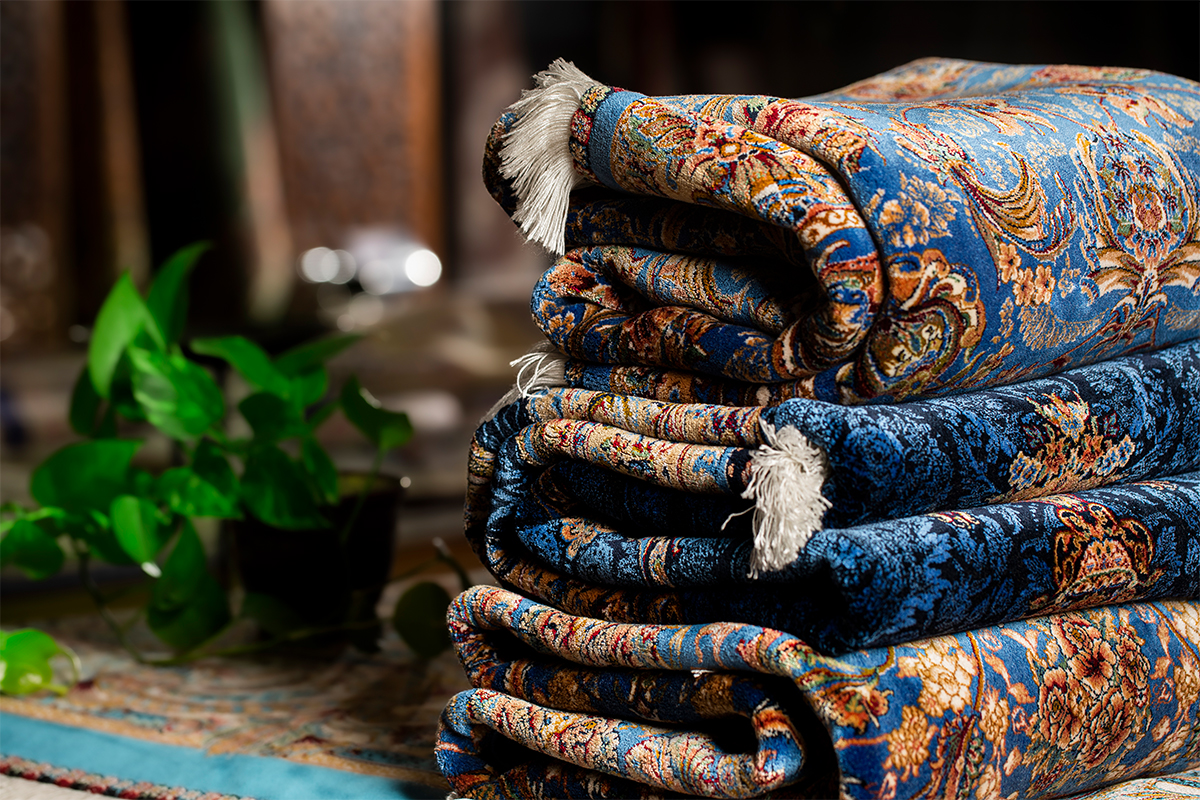Persian silk rugs, often referred to as Persian silk carpets, are luxurious and high-quality handmade rugs originating from Iran (historically known as Persia). They are celebrated worldwide for their exquisite craftsmanship, intricate designs, and the use of silk, which gives these rugs their distinct softness and sheen. Below is an overview of their defining features and what to know when buying a Persian silk rug.
Key Characteristics of Persian Silk Rugs
- Material:
Persian silk rugs are primarily woven with pure silk fibers, renowned for their softness, gloss, and durability. Occasionally, wool or cotton may be added to the silk foundation for added texture or structural support, but high-end rugs are often made entirely of silk. - Design:
Known for their complex, elaborate designs, Persian silk rugs feature motifs like floral patterns, medallions, arabesques, and geometric elements. Each rug showcases regional artistry, reflecting the city or region where it was crafted. - Handmade Craftsmanship:
Authentic Persian silk rugs are entirely handwoven by skilled artisans. Depending on size and complexity, each rug can take months, if not years, to complete, underscoring the labor-intensive and meticulous process behind their creation. - Knot Count:
The knot count—measured as knots per square inch or centimeter—is a key quality indicator. Higher knot counts allow for more intricate patterns and fine detail, contributing to the rug’s value and appeal. - Durability:
Despite their delicate appearance, Persian silk rugs are durable thanks to the strength of silk fibers. However, they are best suited for low-traffic areas or as decorative pieces since they are sensitive to moisture, sunlight, and heavy foot traffic. - Value:
Persian silk rugs are not only functional but are valuable collectibles. Factors like size, age, knot count, and origin impact their worth, making antique pieces especially coveted among collectors. - Care and Maintenance:
Proper care is essential to maintain a Persian silk rug’s beauty. They should be kept out of direct sunlight, cleaned by professionals, and protected from spills or stains to ensure longevity.

Persian silk rugs
Types of Persian Silk Rugs
Persian silk rugs come in a variety of types, each with distinct regional characteristics, designs, and weaving techniques. Here are some of the most renowned:
- Qom (Qum) Rugs
- Origin: Qom, central Iran
- Features: Highly detailed with floral patterns and medallions, known for high knot counts and premium silk materials.
- Isfahan Rugs
- Origin: Isfahan, a historic city
- Features: Curvilinear designs with floral themes and central medallions, valued for their artistic quality.
- Nain (Na’in) Rugs
- Origin: Nain, known for delicate rugs
- Features: Fine designs with pale colors, central medallions, and intricate floral motifs.
- Kashan Rugs
- Origin: Kashan, an ancient rug-weaving city
- Features: Traditional designs with floral patterns and rich color schemes.
- Tabriz Rugs
- Origin: Tabriz, a major rug-producing city
- Features: Diverse designs, including floral, geometric, and pictorial themes.
- Kerman Rugs
- Origin: Southeastern Iran
- Features: Detailed floral and garden motifs with varied colors, known for their elaborate designs.
- Yazd Rugs
- Origin: Yazd, a city with traditional rug production
- Features: Geometric and floral designs, durable and finely crafted.
- Ghom (Ghom) Rugs
- Origin: Ghom/Qom, famous for silk rugs
- Features: High-quality silk, intricate designs, and high knot counts, often featuring floral and medallion patterns.
Each type reflects the unique artistry of its region, and selecting a Persian silk rug often involves considering design, knot count, and origin.
Pricing of Persian Silk Rugs
The price of a Persian silk rug varies widely based on size, knot count, design complexity, origin, and condition. Here are general price ranges:
- Small to Medium Rugs (2 ft x 3 ft to 4 ft x 6 ft)
- Machine-made or low-quality silk: $200 to $1,000
- Handmade with moderate quality: $1,000 to $5,000
- High-quality handmade: $5,000 to $20,000+
- Medium to Large Rugs (5 ft x 7 ft to 9 ft x 12 ft)
- Machine-made or low-quality: $500 to $3,000
- Handmade with moderate quality: $3,000 to $15,000
- High-quality handmade: $15,000 to $100,000+
- Oversized Rugs (10 ft x 14 ft and larger)
- Machine-made or low-quality: $2,000 to $10,000
- Handmade with moderate quality: $10,000 to $50,000
- High-quality handmade: $50,000 to several hundred thousand dollars+
Factors Influencing Price:
- Design Complexity: More intricate designs with fine details are pricier.
- Knot Count: Higher knot counts indicate finer craftsmanship, raising the price.
- Age and Condition: Antique rugs are valued for their rarity.
- Origin: Rugs from well-known cities like Qom, Isfahan, and Nain command higher prices.
- Materials: Pure silk is more expensive than silk-wool blends.
- Size: Larger rugs require more materials and labor, adding to the cost.
- Rarity: Unique or historical designs can significantly increase value.
Buying a Persian silk rug is a worthwhile investment, and for assurance of authenticity, it’s best to buy from reputable dealers. Having a rug appraised can help if you’re investing in an antique or high-value rug, as its value may increase over time.
For expert guidance, feel free to contact our site’s advisors before purchasing an Iranian carpet.






Recent Comments